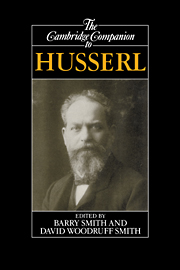6 - Transcendental idealism
Published online by Cambridge University Press: 28 May 2006
Summary
“Only those who misunderstand the most profound sense of the intentional method or of the transcendental reduction or even of both, may want to separate phenomenology from transcendental idealism” (CM, p. 119).
Edmund Husserl is generally considered to be one of the greatest German philosophers of the twentieth century. Even though the influence of his works has waned somewhat on the European continent, his star is rising in the Anglo-Saxon world. Analytic philosophy has assimilated Husserl as a fellow-contributor to the research programme of a theory of meaning. In particular, Husserl's concept of noema is often regarded as a richer and generalized alternative to the Fregean notion of Sinn.
How should one evaluate Husserl's place in the history of modern philosophy? Seen from an analytical perspective, Husserl may appear to be a transitional thinker, well ahead of his time, who anticipated the linguistic turn. Many passages from his works might be quoted to substantiate this interpretation. Husserl claims, for instance, that “all real unities are unities of sense.”
- Type
- Chapter
- Information
- The Cambridge Companion to Husserl , pp. 239 - 322Publisher: Cambridge University PressPrint publication year: 1995
- 33
- Cited by

